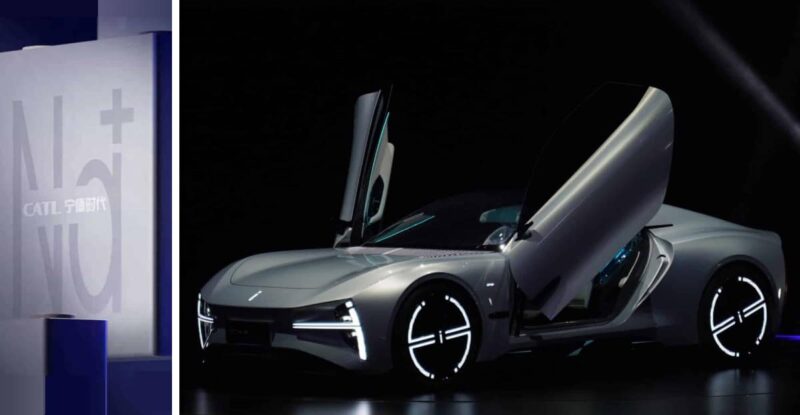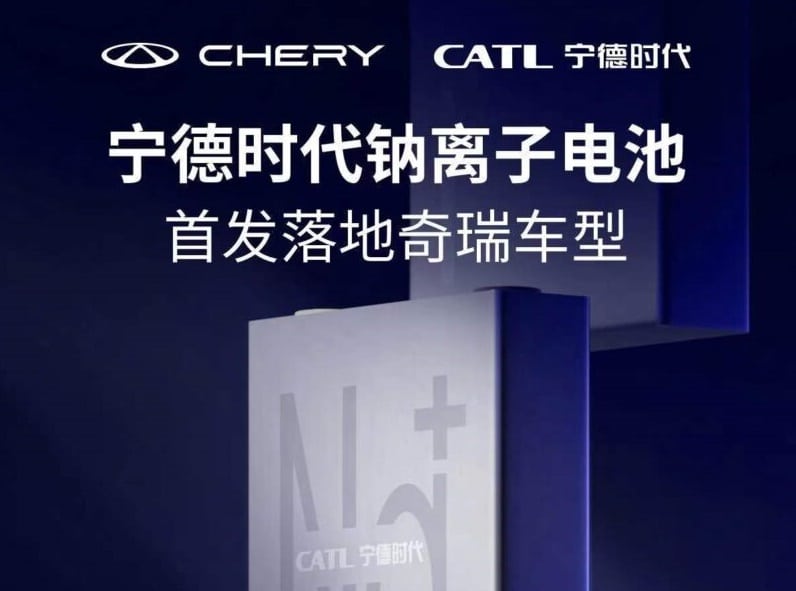Lei Xing: Is CATL’s sodium-ion battery ready for prime time?
Like all its breakthrough or blockbuster battery technology innovations that CATL has revealed throughout recent months and years, the sodium-ion battery received great fanfare when revealed nearly two years ago.
Together with the so-called AB battery pack solution, which integrates sodium-ion cells and lithium-ion cells into one pack, the sodium-ion battery technology unveiled on July 29, 2021, offers these benefits compared with existing mature battery chemistry such as LFP and NCM, at least on paper: higher energy density, faster charging, better thermal stability, greater low-temperature performance, and higher integration efficiency.
CATL claimed then that the energy density of the sodium-ion cell could reach up to 160Wh/kg, and the battery could charge in 15 minutes to 80% SOC at room temperature. Moreover, in a low-temperature environment of -20°C, the sodium-ion battery has a capacity retention rate of more than 90%, and its system integration efficiency can reach more than 80%. The sodium-ion batteries’ thermal stability exceeds China’s national safety requirements for traction batteries. The first generation of sodium-ion batteries can be used in various transportation electrification scenarios, especially in regions with extremely low temperatures.

Like a lithium-ion battery, sodium-ions shuttle between the cathode and anode. But sodium-ions have a larger volume and higher requirements regarding structural stability and the kinetic properties of materials. CATL claimed that it had solved this industrialization bottleneck by applying Prussian white material with a higher specific capacity and redesigned the bulk structure of the material by rearranging the electrons, which takes care of rapid capacity fading upon material cycling. On the anode side, CATL has developed a hard carbon material with a unique porous structure, enabling abundant storage and fast sodium-ion movement, and improved cycle performance.
By using a high-throughput calculation platform and simulation technology based on CATL’s deep understanding of principles combined with the application of advanced algorithms and computing capacity, CATL researched and developed a chemistry system that is most suitable for sodium-ion batteries, enabling them to enter the fast track to industrialization, and continuously evolve. The next generation of sodium-ion batteries’ energy density development target is to exceed 200Wh/kg.
On the manufacturing side, CATL said sodium-ion is compatible with lithium-ion battery production equipment and processes, and the production lines can be rapidly switched to achieve a high-production capacity. At July 2021 reveal event, it targeted to form a basic industrial chain by 2023.
Well, we are now nearly at the halfway point of 2023, and it wasn’t until recently, right before this year’s Shanghai Auto Show to be exact, that more details of the first customers of the sodium-ion were revealed.

One of them is Chery, which made the official announcement when it unveiled its iCAR brand at an event ahead of the show. The first model from the iCAR brand will be powered by a sodium-ion battery and is expected to hit the market in the fourth quarter of this year. Chery and CATL also announced their joint battery brand ENER-Q which will introduce sodium-ion, M3P, LFP, and NCM battery systems for BEV, PHEV, and EREV applications. The sodium-ion could also find its way into additional Chery models such as the QQ Ice Cream and Ant.

Huang Qisen, deputy director of the CATL Research Institute, had openly indicated at the end of last year that sodium-ion batteries would be suitable for BEVs with 400 km of range or below. With the AB battery pack solution, the sodium-ion battery could also support BEVs with a range of 500 km. CATL also plans to establish 5 GWh of sodium-ion battery production capacity this year to help customers and initial commercialization.
Well, this is the part where we talk about the caveat for the sodium-ion and that not all is rosy as presented.
The energy density of the first generation of the sodium-ion is pretty good. Still, it’s less than that of LFP, which is 180 Wh/kg, and that of NCM, which is 300 Wh/kg, hence the limitation pointed out by Huang that it would be suitable for smaller vehicles with shorter ranges, such as the aforementioned models from Chery as well as the BYD Seagull which is also rumored to be powered by BYD’s own sodium-ion batteries in the future. Though the AB battery pack solution combining different chemistries somewhat improves the range, we already have examples of this on the market: Nio’s 75 kWh battery is, in fact, a hybrid battery using both LFP and NCM chemistry.

CATL displayed an AB pack and a sodium-ion cell at the Shanghai Auto Show. I spent some time there learning from the engineers and trying to get the lowdown on the current status of sodium-ion industrialization. The engineer I talked to confirmed SOP before the end of the year but stressed that it’d take some time to cultivate the supply chain, especially the upstream raw materials.
“The bottleneck remains to be these materials specific for sodium-ion batteries,” the engineer told me. “And that takes time for the supply chain to mature and production to ramp up.” He also told me that the initial production quantity for the iCAR vehicle with sodium-ion would not be that big, which again is affected by the supply chain. The sodium-ion cells will be integrated directly into a pack, utilizing CATL’s cell-to-pack or CTP technology, which is then integrated into the chassis.
There is no question we are definitely seeing sodium-ion going into production vehicles that Chinese consumers will soon be able to buy. Still, it will take some time to ramp up significant volumes that we can call mainstream, like LFP and NCM today.
Lei Xing is a recognized authority on the electric vehicles market in China and co-host of the China EVs & More podcast; you can follow him on Twitter. Credit: EVsmart



